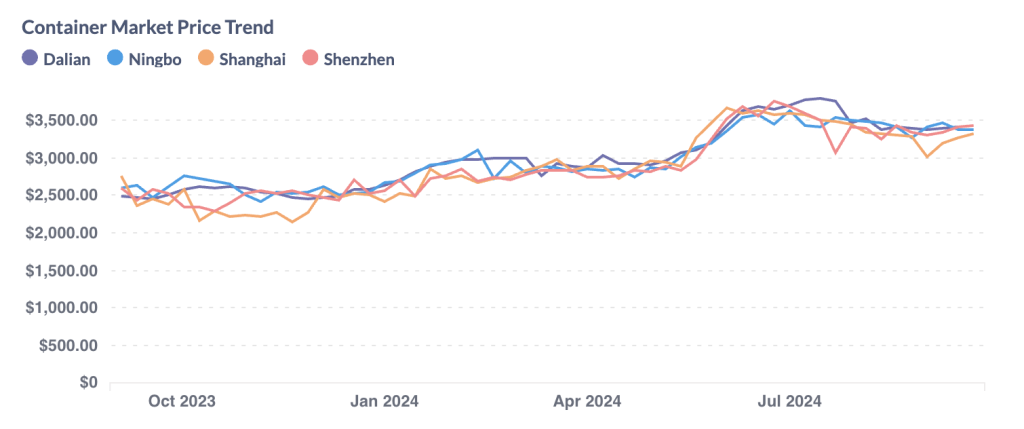- Serious delays at major Chinese container ports affected by extreme weather last week have exacerbated global congestion.
- Increasing congestion has yet to stop freight rates from falling.
- The industry is closely monitoring how impending port strikes on the US east and Gulf coasts will shape the market trends
China’s container trading and leasing rates have significantly declined following disruptions due to a typhoon, in September 2024, reports Safety4sea citing Container xChange.
Typhoons slow down berthing times and container operations in key chinese ports
Last week, China experienced its worst typhoon in 75 years, making landfall on the east coast. As Container xChange informs, Hapag-Lloyd reports that ships are now facing delays of 36-60 hours to berth in Shanghai, while Ningbo faces waiting times of 24-48 hours. This bottleneck is expected to worsen as Typhoon Pulasan approaches, potentially exacerbating the already strained situation.
Several ports in Ningbo and Shanghai have announced the suspension of container operations
Container market conditions in China: Softening demand and container prices
Despite these uncertainties, there is no significant congestion or market tightening within China itself. Several customers have reported a drop in container prices and lower COC (Carrier-Owned Container) rates, suggesting a softening demand for exports from China.
Average container prices on a downward trend
As of September 2024, average container prices in China have maintained their downward trajectory, with declines accelerating ahead of the Golden Week holidays. This drop reflects a broader reduction in demand for container shipments.
Prices have fallen by 25% year over year, from $3,012 in September 2023 to $2,525 in September 2024. This year, container prices peaked at $2,603 in July 2024 and have been decreasing for two consecutive months, Container xChange notes.

Did you subscribe to our daily Newsletter?
It’s Free Click here to Subscribe!
Source: Safety4sea



















